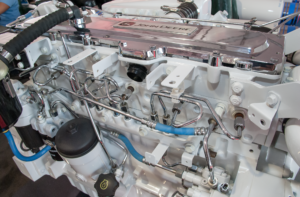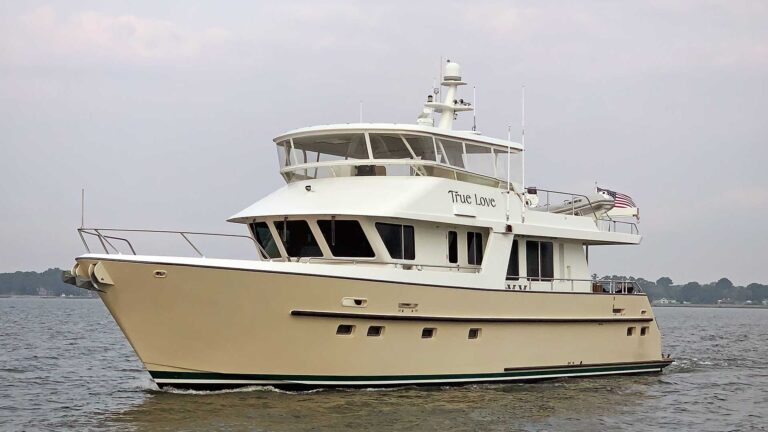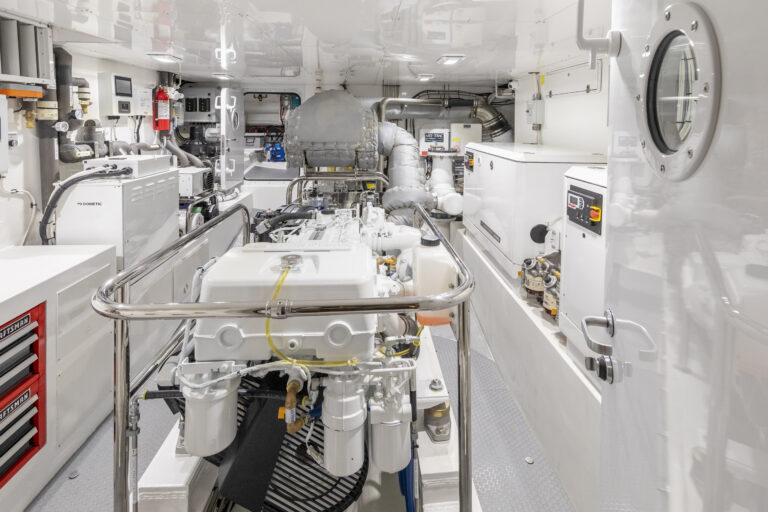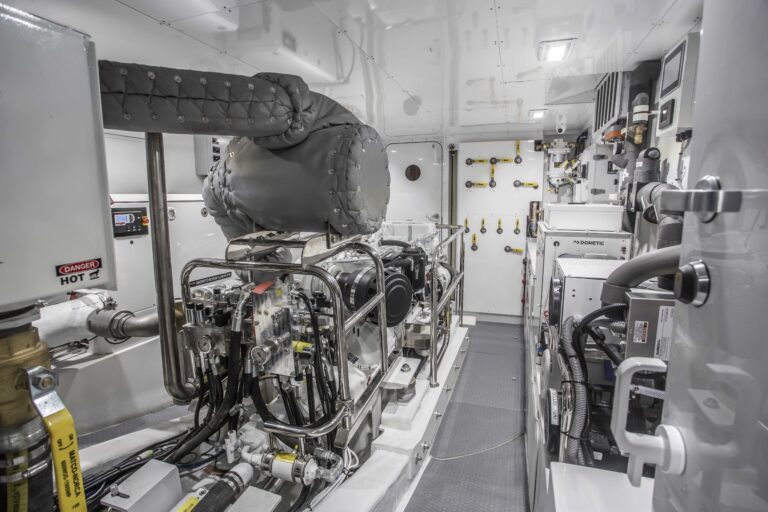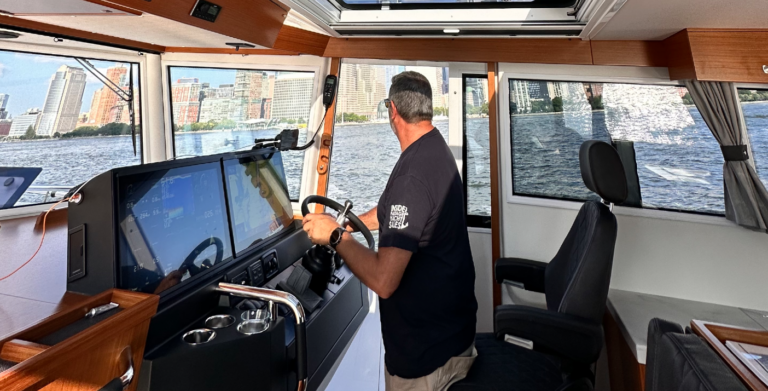Everyone who runs a vessel with an internal combustion engine that is cooled by circulating raw water has an inspection chore to do. You have to take a look at it. A routine inspection of the raw-water system means closing the through-hull and checking heat exchangers, pumps, and little pencil zincs in the heat exchanger. One day last fall after getting that job all squared away, my deckhand, Linda, and I decided to cruise our Krogen 42 over to Blake Island. It is a short trip, just across Puget Sound from Seattle.
Our slip is located just prior to the locks in the last freshwater marina on the Lake Washington Ship Canal. We started up, untied, and idled 100 yards over to the locks. The locks were bringing boats up from the saltwater side to the canal, so we tied up to the waiting wall and shut down.
We slowly entered the small lock chamber on the lockmaster’s signal. Linda got the ship tied to the floating bollards and I shut down the engine. When the water in the chamber got down to the level of the salt water, the gates opened and we left the locks for the 1/2-mile trip to the big water, Puget Sound. At the end of the speed zone, I pushed up the throttle and
uh oh, the engine alarm sounded. The water temperature was high and going higher. I looked below and smoke filled the engine room. When I pulled back to idle, the alarm continued to sound. We made our way back to Shilshole Bay Marina and tied up at the first available dockthe pumpout dock. To paraphrase Chuck Berry, The motor cooled down, the heat went down, and thats when I heard that cash register sound. But the alarm was quiet.
THE SEQUENCE OF UNTIMELY EVENTS
If the intake of raw water is interrupted, no water reaches the rubber impeller in the raw-water pump. With no lubrication, the impeller heats up and destroys itself. Furthermore, no water reaches the heat exchanger to take heat from the closed cooling system. The coolant (the antifreeze mixture) heats up past about 210°F and as it approaches boiling, the temperature alarm sounds. Now we are up to the uh oh part.
Meanwhile back in the engine room, the engine is running. It is pumping hot exhaust gas out of the cast iron manifold into the rubber exhaust hose with no water to cool it. The hose is not really heat resistant. It is cooking. The gas is now entering the fiberglass water-cooled marine muffler. But no water is cooling it either, so it is melting (more accurately, the resin that holds it together is melting). While there is no fire, all this cooking and melting is creating lots of smoke and fumes.
SINGLE-ENGINE BOAT
If our Krogen had two engines, I would have shut down the hot one and things would have been a bit more relaxed. Why did we keep running an overheating engine? We were between a rock and a hard place. There was shallow water south of us, and marina and commercial traffic ahead and to the north. Had we been out in open water, I might have shut down and called for help.
Safely on a dock, I could call for help in the form of parts. I did have a spare impeller (dont leave home without one). I called Fisheries Supply marine supply store and learned that the hose would be no problem but the muffler was no longer manufactured. I thought about re-gluing the melted joints on the intake and outflow hose connections, but then thought, Why not try to do it right?
The phone number for Centek, the manufacturer, was on the muffler, so I called them. I learned that the part number was discontinued but an equivalent muffler was still available. I got the new part number and called Fisheries back. They had one in stock and I was not going to have to pay transient moorage in a marina a scant quarter mile from my own slip while I waited for a custom-built muffler. I fixed the problem and we were home the next day.
WHAT WAS THE REAL PROBLEM?
Remember, I had done a routine inspection of the raw-water system just before attempting to leave on this trip. I forgot to open the seacock when I finished. No excuse. Krogen put the valve just below the stairs that I go down to get to the engine room. It is in plain sight. As Homer Simpson says, Doh! I had to replace damaged parts and go through the whole circuit again to make sure that there were no pieces of the impeller blades blocking the lines in and out of the heat exchanger.
There are two schools of thought on seacocks and whether they should be closed or open when the boat is not actually running. My answer is to keep them open and exercise them on a regular basis. That being said, I reach down and touch the main engine raw-water intake as part of my pre-start check. Even if I am just in the engine room to fix something or find a tool, I sometimes look at that seacock and say to myself, You dummy, dont forget that again.
LESSON LEARNED
I am henceforth and forever more going to take the time to walk aft after starting the main engine and see the water splashing out of the exhaust hose behind the boat. This will prove that the raw-water inlet is not blocked, that I did not leave the through-hull closed, that the raw-water pump is working, and the circuit through the raw-water side of the heat exchanger is open.
Technical Editor’s Note
The addition of an exhaust high-temperature alarm would have prevented the entire failure, including the damaged impeller. It would have sounded as soon as the otherwise wet exhaust reached 165°F, long before any damage was done. Exhaust temp alarms are also required for ABYC compliance.Steve DAntonio, PMM Technical Editor



